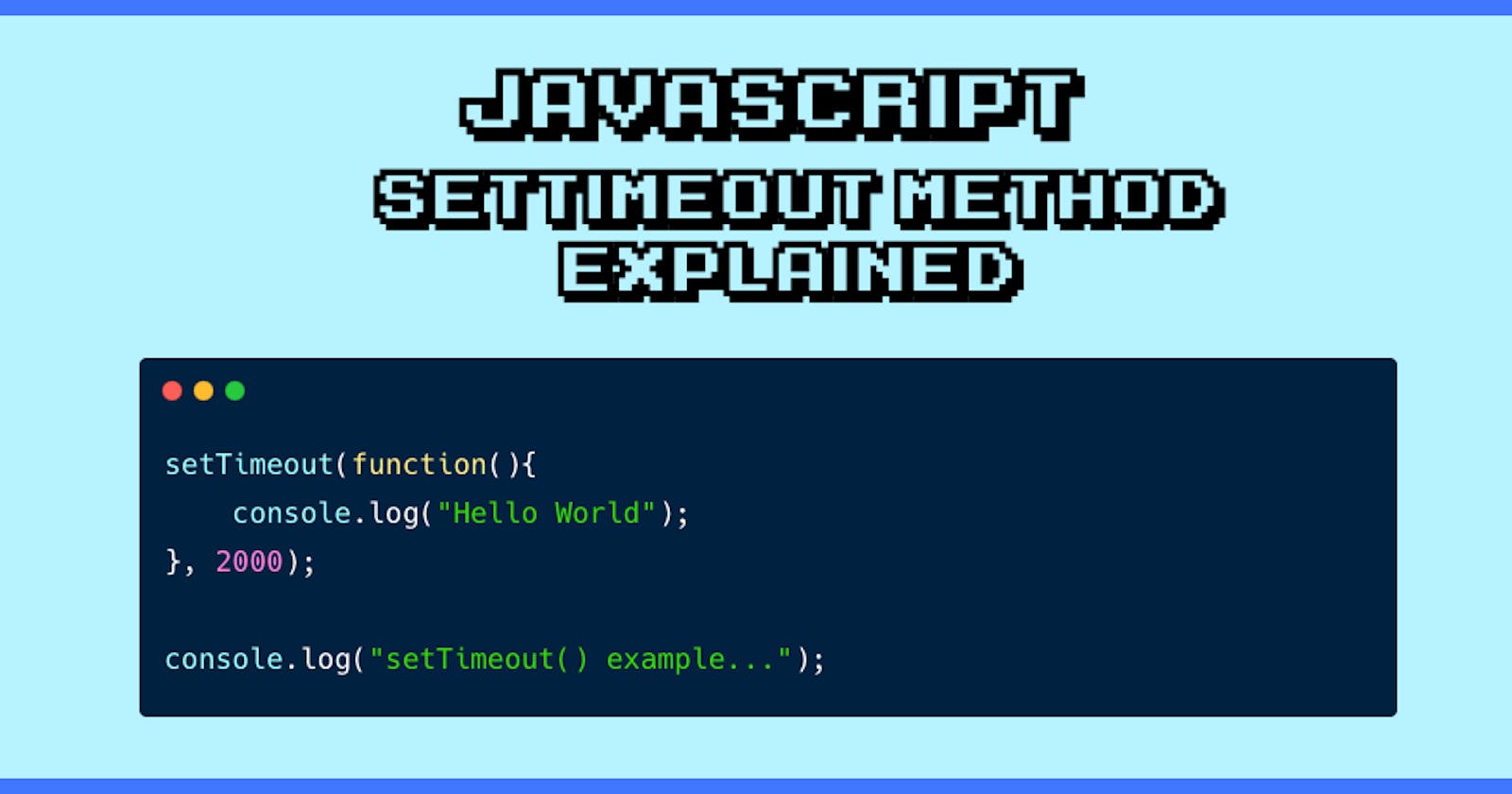Table of contents
The setTimeout() function is similar to the setInterval() method in JavaScript. The only difference is that this method does not execute repeatedly. This method calls the function after a specific period only once.
We can write this method with a window prefix or without a window prefix.
Syntax
window.setTimeout(function, time period);
or
setTimeout(function, time period);
Parameters
This function takes two parameters. The first parameter is the function that we want to execute and the second parameter is the time interval in milliseconds. Thus, according to both parameters, the function in the first parameter calls itself after a specific time period which is mentioned as second parameter.
Example
HTML
<!DOCTYPE html>
<html lang="en">
<head>
<meta charset="UTF-8">
<meta http-equiv="X-UA-Compatible" content="IE=edge">
<meta name="viewport" content="width=device-width, initial-scale=1.0">
<title>Hello All after 3 seconds</title>
<link rel="stylesheet" href="style.css">
</head>
<body>
<div class="container">
<div id="HelloAll">Hello All</div>
</div>
<script src="app.js"></script>
</body>
</html>
CSS
body{
margin: 0;
display:flex;
justify-content: center;
height: 100vh;
align-items: center;
background-color:slategray;
}
#HelloAll{
font-size: 200px;
display: none;
}
JavaScript
let HelloAllEl = document.getElementById("HelloAll");
setTimeout(() => {
HelloAllEl.style.display = 'block';
}, 3000);
In the above example the Hello all text shows after 3 seconds i.e. 3000 milliseconds.
Result after 3seconds.

ClearTimeout()
To stop the execution of the setTimeout() function we have to use clearTimeout() function. The value returned by the setTimeout() method has to be passed as the argument of clearTimeout() method to cancel the timeout.
